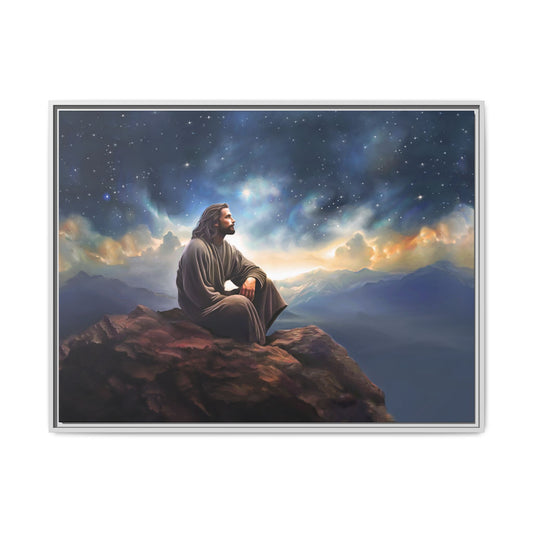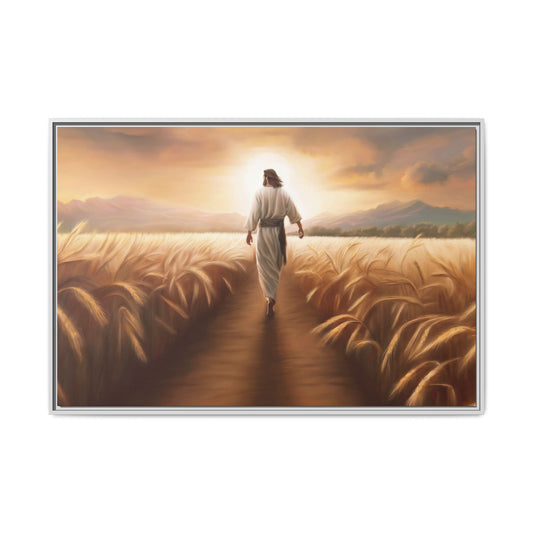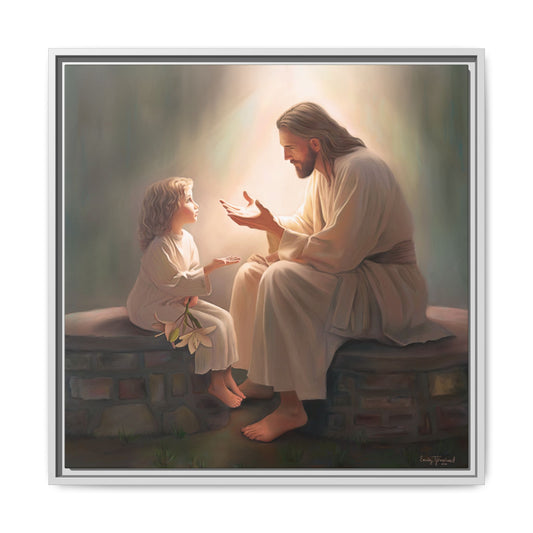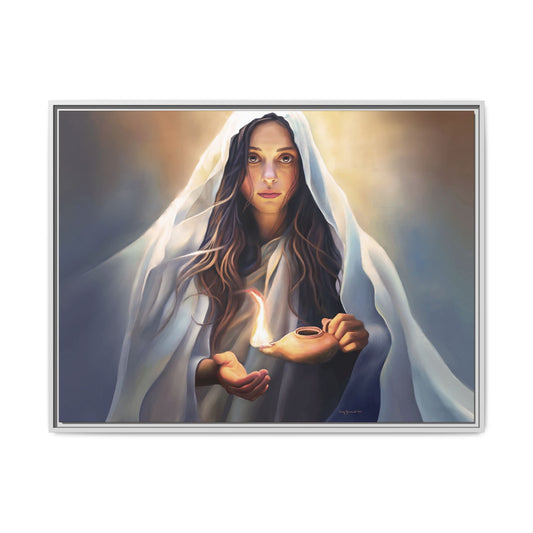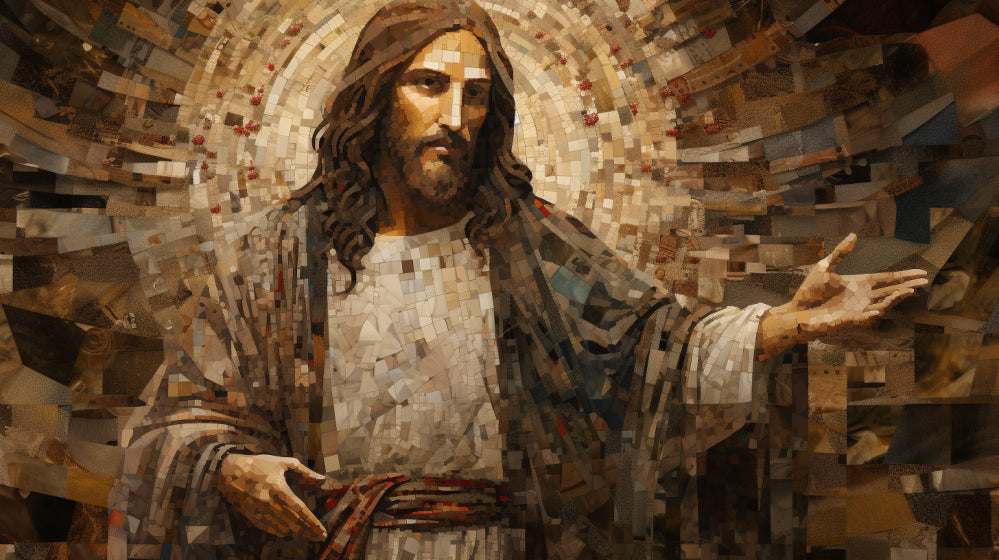
Jesus Description
Share
We have always been intrigued by the description of Jesus of Nazareth. From his time on earth to present day, he has been referred to as the Messiah, the Anointed One, and the Son of God. Though we may be familiar with his life as recounted in the Gospels of the New Testament, many religions and cultures have also portrayed Jesus in different ways. In this article, we will explore the various artistic representations of Jesus and their implications in religious and cultural contexts. Join us as we investigate the different ways Jesus has been depicted throughout history.





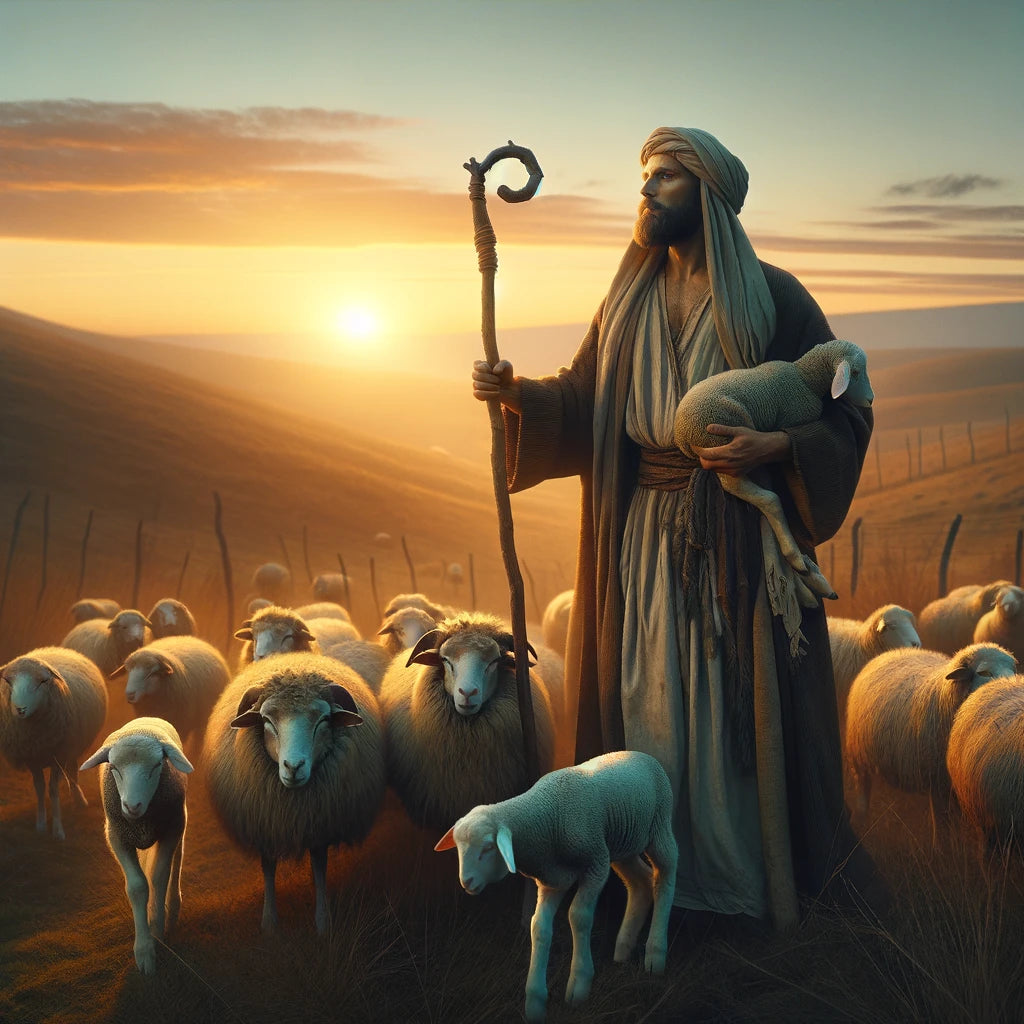















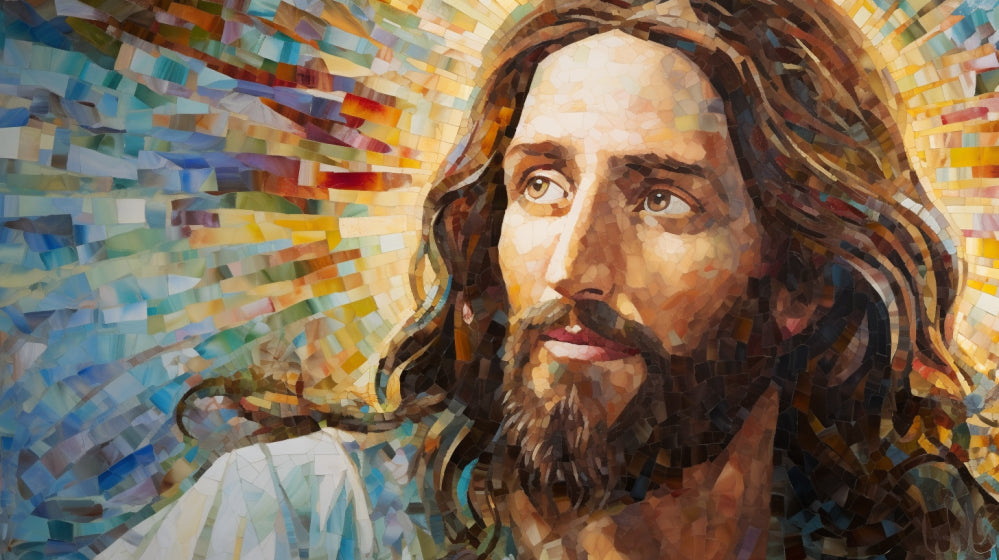







Key Takeaways
- Jesus is believed to be the incarnation of God the Son and the awaited Jewish messiah.
- Jesus' sacrifice on the cross brought atonement for sin in the Christian faith.
- Jesus' resurrection is a central belief in Christianity and is attested in the four canonical gospels.
- Different religious traditions have varying interpretations of Jesus' life and teachings.
Artistic Jesus Representations
We are going to explore the significance of Jesus portraits in Christian worship. We will also gain an understanding of what Jesus was said to look like. Through this article, we'll gain insight into the purpose of artistic representations of Jesus. We will also explore their role in Christian tradition.
Brief Overview of the Significance of Jesus Portraits in Christian Worship
Hundreds of artistic representations of Jesus have been created over the centuries, each conveying unique meanings and having their own significance in Christian worship. Many of these artworks depict Jesus found in the Bible, from his nativity, miracles, crucifixion, and resurrection. Such artworks can be found in churches, homes, and public spaces, as a way to honor and remember Jesus Christ. Through these images, Christians can reflect on Jesus' teachings and his role as the messiah. They can also be used to spread the Gospel and bring hope to those who are seeking meaning in their lives. Jesus portraits serve as a source of inspiration and remind believers of their faith and mission to serve others.Purpose of the Article – To Provide Comprehensive Information About Jesus' Description and Appearance
Building upon our discussion of the significance of Jesus portraits in Christian worship, we now turn to the purpose of this article – to provide comprehensive information about Jesus' description and appearance. Jesus is described in the New Testament, with the Gospels providing different accounts of his life, ministry, and resurrection. Artistic representations of Jesus offer insight into how he was perceived in different times and cultures. By studying the depictions of Jesus, one can gain an understanding of the various interpretations of his physical appearance. Such images also serve to illustrate how Jesus was depicted in the New Testament and how Jesus is perceived in Christian worship today. Ultimately, this article seeks to provide a comprehensive overview of Jesus' description and appearance through artwork.
Understanding Jesus' Description
We will examine the Biblical accounts of Jesus' life and the historical context of Jesus' time to better understand his description.Examination of Biblical Accounts and Historical Context
We will examine key passages from the New Testament that provide insight into Jesus' physical appearance and contextualize them within the historical and cultural milieu of the time. We'll explore how these passages have been interpreted by artists in their depictions of Jesus and discuss the implications of such artistic interpretations.
Key Passages in the New Testament That Provide Insights into Jesus' Physical Appearance
Gleaning insights from the New Testament, we explore the physical description of Jesus in its historical context. John the Apostle, a son of Zebedee and Salome, and a member of Jesus' family, provides the most detailed descriptions of Jesus. Specifically, he mentions Jesus' hair, eyes, face, and feet.- Jesus' hair was like 'lamb's wool'
- His eyes were 'like a flame of fire'
- His face shone 'like the sun'
- His feet were 'like burnished bronze'.

Historical and Cultural Context of Jesus' Time and Its Influence on Artistic Depictions
By exploring the historical and cultural context of Jesus' time, we can gain a better understanding of how his description has been interpreted and depicted in art. Mary, the mother of Jesus, is mentioned in the Gospels of Matthew and Isaiah. Moreover, Jesus was born in a particular place and time and interacted with people in the ancient world. Thus, the circumstances of Jesus' life can provide insights into how his character and features have been depicted in art over the centuries. Understanding this context can help us serve others by offering a more informed perspective on Jesus' description.
Biblical Portrayals of Jesus' Appearance
The Bible is the primary source of information about Jesus' appearance. It provides numerous descriptions of his physical features, clothing, and demeanor. In this article, we explore the biblical portrayals of Jesus' appearance.
Description of Jesus' Appearance in the Bible
In this article, we'll examine the biblical accounts of Jesus' physical features by closely analyzing relevant passages from the Gospels of Matthew and John. We'll compare and synthesize the information provided in these passages to gain insight into the significance and meaning of Jesus' appearance in the Bible.
Analysis of Bible Verses That Describe Jesus' Physical Features
We examine the Bible verses that describe Jesus' physical features to gain insight into his appearance. His eyes were described as “having fire” and his skin was said to be “as white as snow”. His hair was said to be “like wool” and “like purest white.” This description paints a vivid picture of Jesus' physical features, giving us a better understanding of how he may have looked.
- Detailed Scrutiny of Relevant Passages from Different Books (e.g., Matthew, John)
Examining passages from Matthew and John, we explore biblical portrayals of Jesus' appearance. His physical description is revealed through these Gospels, providing insight into Jesus' physical features. We analyze the scriptures to gain a better understanding of Jesus' identity and to gain a more accurate description of him. Through close reading, we consider the language used to describe Jesus, paying attention to the nuances of the words and the context in which they're used. We then compare and synthesize this information to gain a better understanding of Jesus' appearance.
- Comparison and Synthesis of the Information Provided in These Passages
By comparing and synthesizing the information provided in the biblical passages, we gain insight into Jesus' physical description. Peter's initial reaction to Jesus' appearance is described in the gospel of John, as well as his appearance to the disciples on the road to Emmaus. The accounts of Jesus' crucifixion, in Luke and Matthew, describe his appearance as he's led to the cross. We also learn from Roman accounts of Jesus' appearance. This evidence shows Jesus to be an average-looking man with short hair, beard, and a cross-like face. The overall description thus paints a picture of a humble, yet powerful, figure.
Discussion on the Significance and Meaning of Jesus' Appearance in the Biblical Context
What does Jesus' appearance in the Bible mean for us? Jesus Christ is described in the Bible as a physical being, allowing us to better understand His life, teachings, and impact. His physical presence affirms the reality of His life and mission, which is grounded in Scripture. We can embrace the Bible's testimony of Jesus and His love for us, as we seek to understand and live as He did. This leads us to a greater appreciation of His powerful message and how it can continue to shape our lives today. This transitions into the next section, about the historical and cultural depictions of Jesus.
Historical and Cultural Depictions of Jesus
Throughout history, Jesus has been depicted in a variety of ways in art and culture. From the earliest representations in the catacombs to modern re-imaginings, Jesus has been portrayed in a range of contexts. These depictions give us an insight into the cultural values and attitudes of each era.Evolution of Artistic Representations of Jesus
We will explore how early Christian art portrayed Jesus. The impact of Greco-Roman and Byzantine art on Jesus portraits. How Western art has depicted Jesus throughout history. Including the influence of Renaissance art.
Examination of Early Christian Art and Its Portrayal of Jesus
As early Christians portrayed Jesus in various works of art, they offered insight into their beliefs and cultural context. From mosaics to stained glass windows, the depiction of Jesus has evolved over time. Here are some key points: 1) Jesus was often seen as a strong figure, with a halo and white robe in Western art. 2) Eastern depictions of Jesus often showed him with a beardless face and dark hair. 3) Some artworks depicted Jesus with his disciples or the Virgin Mary. 4) Some works show Jesus with symbols, such as a cross, to represent his mission. Through art, early Christians presented a unique and powerful interpretation of Jesus Christ's appearance and message.
- Influence of Greco-Roman Tradition on Early Christian Artwork
Many early Christian works of art were heavily influenced by Greco-Roman tradition. This influence can be seen in the representations of Jesus in the early Christian period, which often borrow from Greek cultural themes and iconography. The Revelation to Paul on the road to Damascus is a prime example of this, with the imagery of a bright light, a voice from heaven, and a horse-drawn chariot. This Greek-inspired depiction of Jesus has been used in various forms of art to show the power and majesty of the divine.
- Impact of Byzantine Art on Jesus Portraits
Byzantine art had a profound impact on the representation of Jesus in portraits and other works of art. It was characterized by its use of gold, bright colors, and intricate patterns. Jesus was often depicted with a halo, in a frontal pose, and with a solemn expression. The art also emphasized the divine nature of Jesus and often included symbols of his divinity. It had a lasting influence on the depiction of Jesus in art and continues to be seen in modern representations.Exploration of Western Portrayals of Jesus Throughout History
We explore how portrayals of Jesus have evolved through history, including the influence of cultural and historical contexts on artistic representations. From Jesus' feet being depicted as bare or shod, to His being portrayed as a loving, humble figure, the depictions of Jesus have varied. History and culture has had a strong influence in what Jesus has been shown to look like and how He's been portrayed. Love and humility have been part of many of these depictions. As we move into the Renaissance era, we'll see how Jesus' depiction evolves further.
- Influence of Renaissance Art on Jesus' Depiction
Through centuries of art history, the Renaissance had a particularly powerful influence on the representation of Jesus. People began to see an idealized version of Jesus, as a compassionate, wise, and powerful king. Churches and artworks began to depict Jesus in a more realistic and humanistic way. This included vivid colors, dynamic poses, and emotional expressions. Jesus was seen as a human being, not just a divine figure. This shift changed how the public viewed Jesus, emphasizing his humanity and his love for all people.
- Influence of Other Art Movements and Cultural Contexts on Western Portrayals
Building on the Renaissance art movement, other art movements and cultural contexts have continued to shape the western representations of Jesus. Holy figures, human emotions, and English translations have all been used to capture his person and mission. From the Baroque to the modern era, artists have sought to portray Jesus in a way that honors his holiness, humanity, and message. Images, statues, and stories have been crafted to help people draw closer to Jesus and to better understand his mission. Each cultural context has added its own unique perspective to the depiction of Jesus.
Controversies and Criticisms of Jesus Portraits
Although Jesus' exact physical appearance is unknown, there have been many depictions of him throughout history, some of which have been controversial. In this article, we'll examine these controversies and the criticisms that have arisen surrounding various portraits of Jesus.
Examination of Controversies Surrounding Depictions of Jesus' Appearance
We explore the controversies and criticisms surrounding visual depictions of Jesus. This includes the arguments against creating visual representations of him and the implications of cultural biases on his portrayal. Criticisms have been raised in regard to the accuracy of Western portrayals of Jesus. This prompts us to consider the implications and consequences of these criticisms.
Arguments Against Creating Visual Representations of Jesus
Though the life of Jesus is described in the Gospels, there are controversies and criticisms of creating visual representations of his appearance. Some argue that Jesus' true likeness is unknowable, as he's no longer on earth. Others fear that art could be idolatrous and detract from his teachings. Still, some religious groups believe that Jesus' physical description can be determined from Scripture. Death, earth, and fire are all significant elements of the Jesus story that have been used in art. To conclude, there are also criticisms regarding the accuracy of western portrayals.
Criticisms Regarding the Accuracy of Western Portrayals
Building on the arguments against creating visual representations of Jesus, there are also criticisms regarding the accuracy of western portrayals. Many argue that Jesus' skin color is misrepresented in Western art, depicting him as a white person when he'd have likely had darker skin. Additionally, the depictions of Jesus with a heavenly glow or aura around him are considered to be inaccurate and overly idealized. As such, many argue that these images don't accurately reflect the physical appearance of Jesus.
Exploration of the Implications of Cultural Biases on Jesus' Portrayal
Building on the criticisms of western portrayals of Jesus, we explore the implications of cultural biases on his depiction, examining the controversies surrounding Jesus' appearance. From his godly nature to his humanity, Christian beliefs, and physical appearance, Jesus has been depicted in numerous ways. Some view him as a white man with Anglo features, while others believe he was Middle Eastern or of mixed race. Here are four key aspects to consider: 1) Jesus' dual nature as both God and man. 2) His place in Christian beliefs. 3) His physical appearance. 4) Cultural biases within depictions of Jesus. We must consider how these factors impact our perception of Jesus and strive to serve others in a way that's objective and informed.
Worshipful Expressions of Jesus Portraits
Throughout the centuries, Christian worship has been influenced by the worshipful expressions of Jesus portraits created by contemporary artists. From Byzantine icons to modern day depictions, these artworks have been used to venerate and honor Jesus through prayer and meditation. We'll investigate how these portraits have been used to worship Jesus throughout the faith's history.
Discussion on the Role of Jesus Portraits in Christian Worship
We can explore the emotional and spiritual power of visual representations of Jesus through the centuries. By looking at the impact of Jesus portraits, we can gain a better understanding of how visual art can be used to express faith and devotion. Furthermore, we can examine the encouragement for artists to create works that can help promote meaningful worship. This includes understanding the role of Jesus portraits in religious rituals and the significance they hold for believers.
Reflection on the Emotional and Spiritual Impact of Visual Representations
As Christian worshippers, we can consider the emotional and spiritual impact of visual representations of Jesus, such as Jesus portraits, on our faith. Jesus' body, living long ago, is often depicted in ways that provide encouragement, solace, and inspiration. We can see how the use of Jesus portraits can bring comfort and challenge, peace and joy, assurance and strength. Similarly, they can evoke a sense of hope, wonder, and awe. Jesus' representation in art can be a powerful source of spiritual transformation and growth. Such visual expressions of Jesus promote worship and give us cause to pause and reflect.
Encouragement for Artists to Depict Jesus in a Way That Promotes Worship
All artists who are interested in depicting Jesus in a way that promotes worship should be encouraged to do so. Representing Jesus in art can be a powerful and meaningful way to share His ministry and message of good will. Artists should strive to create works that are accurate, reverent, and meaningful. In doing so, they can help to inspire and uplift people in their worship and devotion to Jesus. Such art can be a powerful tool for ministry, and all who wish to create such works should be celebrated and supported.Highlighting Contemporary Artists and Their Worshipful Portrayals of Jesus
We take a look at some of the most worshipful expressions of Jesus portraits by contemporary artists. We examine how they create unique approaches that reflect the global nature of Christianity.Description of Specific Art Pieces and Their Unique Approaches
Highlighting the unique approaches of contemporary artists, we explore worshipful expressions of Jesus portraits. From traditional depictions to abstract paintings, Jesus' appearance is a top form of expression. We observe: 1) vibrant colors, 2) intricate symbols, 3) bold statements, and 4) complex textures. In this way, diverse portrayals reflect the global nature of Christianity. Significance of these depictions is the next topic.
The Significance of Diverse Portrayals That Reflect the Global Nature of Christianity
By focusing on contemporary artists' worshipful expressions of Jesus portraits, we explore the significance of diverse portrayals that reflect the global nature of Christianity. Through modern works, viewers can gain insight into the timeless message of the New Testament. From Eastern Orthodox icons to African American figurines, each artwork captures the unique impact Jesus has had on cultures around the world. As we appreciate the diversity of these works, we're reminded of the importance of celebrating Jesus' message in our own time.
Conclusion
We have explored the many ways in which Jesus is described across different faiths and contexts. This includes examining how Jesus is portrayed in Christianity, Islam, and other religious traditions. We have also discussed the implications of worshipful expressions of Jesus portraits. By studying these expressions, we can gain a deeper understanding of the diverse ways in which Jesus is described. Now, let's conclude our discussion by summarizing the key points discussed. We have seen that Jesus is depicted as a prophet, a divine figure, and a moral exemplar in different faiths. These portrayals vary based on religious beliefs and cultural contexts. We have also explored how worshipful expressions of Jesus portraits can help us appreciate the richness and complexity of these descriptions.Summary of the Key Points Discussed in the Article
Summarizing the key points discussed in this article:- Jesus is a complex figure with an influential life and teachings revered in many religions.
- Accounts of Jesus are the subject of different interpretations.
- He was born to Mary in Bethlehem and grew up in Nazareth.
- Jesus ministered in Galilee and Judea.
- He performed healing miracles and taught extensively about the Kingdom of God.
- Jesus was crucified on the order of Pontius Pilate.
- After his death, Jesus was resurrected and ascended to heaven.
- Various extra-biblical references, such as Josephus and Tacitus, support the historical existence of Jesus.
- Jesus remains an important figure of study and a source of inspiration for millions.

Reinforcement of the Importance of Focusing on the Worshipful Aspects of Jesus Portraits
Continuing our discussion, focusing on the worshipful aspects of Jesus portraits is essential for understanding the significance of his life and teachings. The Gospels, extra-biblical texts, and other accounts provide insight into his birth, ministry, and resurrection. His genealogy, nativity, and miracles all demonstrate his divinity and power. Jesus' teachings of love, mercy, and justice still resonate today and provide a new way of living. His Passion and resurrection are key aspects of his life and the foundation of the Christian faith. Through worshipful contemplation of Jesus' life, we come to a better understanding of our own experiences and the potential of each new day. With such an understanding, we can approach life with a sense of hope and purpose, knowing that Jesus is with us and will sustain us well.

